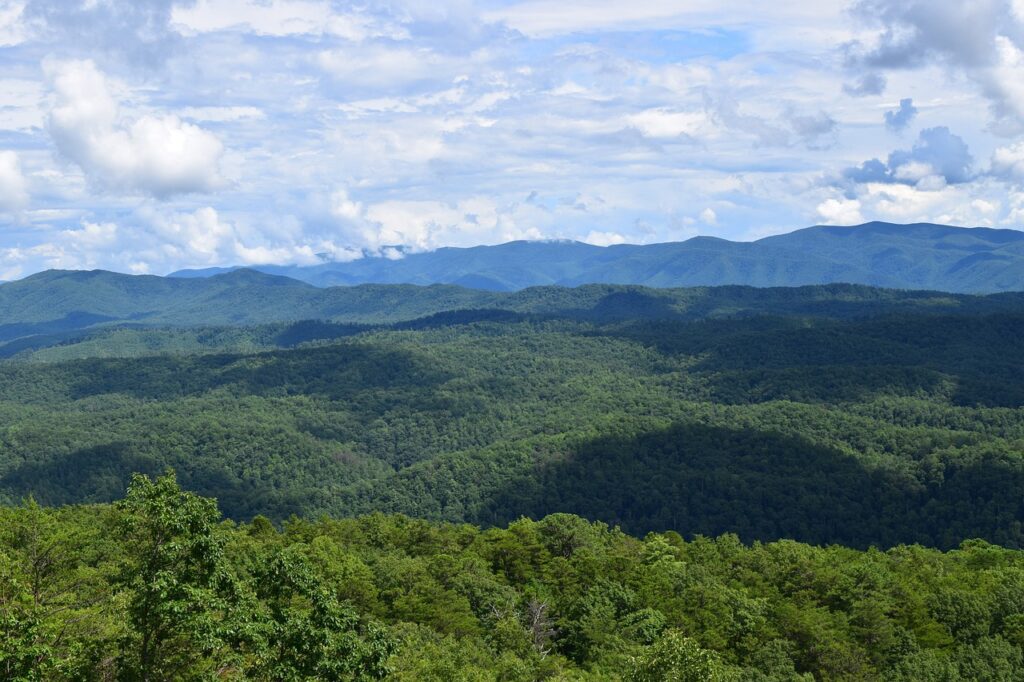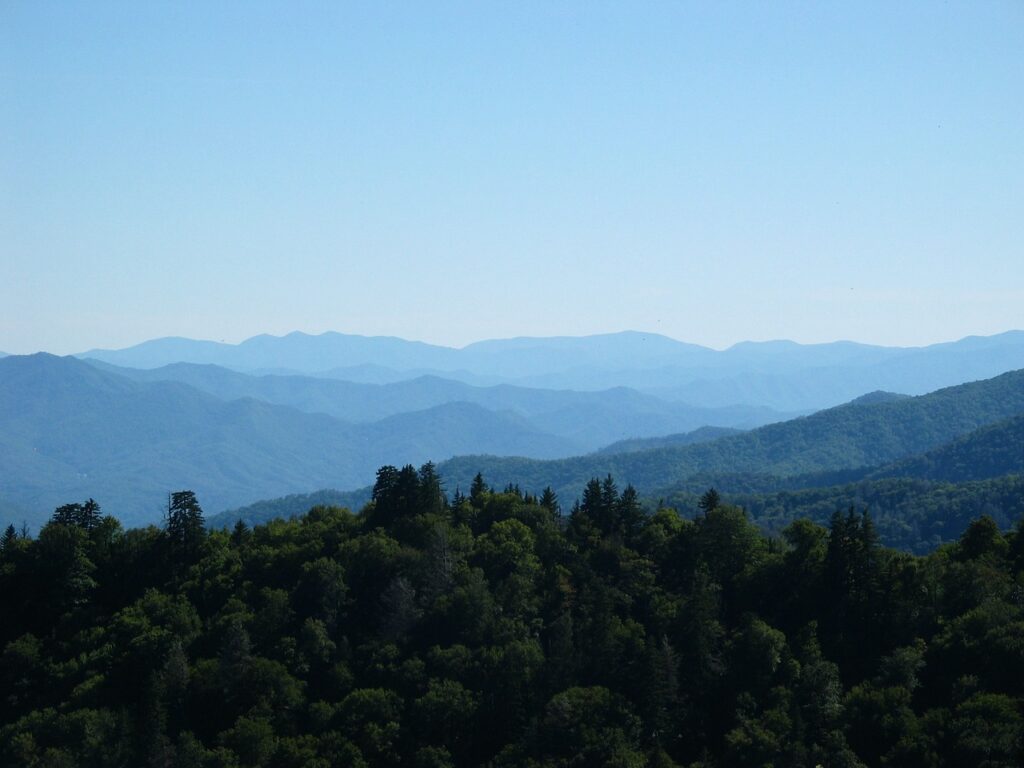Have you ever wondered why the Smoky Mountains often appear shrouded in a mesmerizing blue hue, resembling billows of smoke? It is a sight that leaves visitors captivated and locals in awe of its ethereal beauty. This phenomenon has sparked curiosity for years, drawing people from all over to witness the enigma firsthand. But what exactly causes this breathtaking spectacle? Join us as we uncover the secrets behind the misty veils and delve into the science behind the Smoky Mountains’ mysterious blue smoke.
Overview of the Smoky Mountains
The Smoky Mountains, located in the eastern part of the United States, are a mesmerizing natural wonder that attracts visitors from all over the world. Known for their distinctive haze, these mountains hold a unique charm that sets them apart from other mountain ranges. This article will provide a comprehensive guide to understanding the famous ‘Blue Smoke’ phenomenon, exploring the physical features of the mountains, their location, climate, and biodiversity.
Physical Features
The Smoky Mountains boast a rugged landscape characterized by rolling hills, deep valleys, and soaring peaks. Spanning across Tennessee and North Carolina, the mountain range is part of the larger Appalachian mountain system. With elevations ranging from 875 feet to 6,643 feet, it offers breathtaking views at every turn.
Location
Nestled within the Great Smoky Mountains National Park, these mountains attract millions of visitors each year. The park, established in 1934, covers a vast area of approximately 522,419 acres, making it one of the largest protected areas in the eastern United States. Its strategic location near popular cities such as Gatlinburg and Asheville makes it easily accessible to travelers seeking an escape into nature.
Climate
The Smoky Mountains experience a humid subtropical climate, influenced by their location in the southeastern United States. The region enjoys distinct seasons, with mild winters, vibrant springs, sultry summers, and colorful autumns. The elevation gradient within the mountains creates significant variations in temperature and precipitation, adding to the diverse ecological tapestry of the area.
Biodiversity
The Smoky Mountains are renowned for their remarkable biodiversity. The region is home to an astounding array of plant and animal species, making it one of the most ecologically diverse areas in North America. From the rare and elusive Carolina Northern Flying Squirrel to the captivating Eastern Box Turtle, the mountains teem with life. It is estimated that the Great Smoky Mountains National Park is home to over 19,000 documented species, with countless more yet to be discovered.
The ‘Blue Smoke’ Phenomenon
What it Looks Like
One of the most intriguing aspects of the Smoky Mountains is the ethereal ‘Blue Smoke’ phenomenon that often shrouds the peaks and valleys. This visual display creates an enchanting ambiance, giving the mountains an otherworldly appearance. The hazy bluish-gray mist gracefully drapes over the landscape, softening the edges and blurring the boundaries between earth and sky.
When it Occurs
The ‘Blue Smoke’ phenomenon is most prevalent during the warmer months, particularly in the early morning and late evening. The combination of temperature, humidity, and sunlight creates the perfect conditions for this captivating display. However, it is not limited to specific seasons and can occur throughout the year, adding an element of unpredictability to the experience.
Observations from Different Parts of the Smoky Mountains
The intensity of the ‘Blue Smoke’ phenomenon can vary across different areas of the Smoky Mountains. Clingmans Dome, the highest peak in the range, often boasts the most pronounced display of the haze. Newfound Gap and Cades Cove also offer captivating views of the mist-covered landscape. Each location provides a unique perspective on this captivating natural phenomenon, allowing visitors to immerse themselves in the beauty of the mountains.

This image is property of pixabay.com.
The Science Behind the Phenomenon
Role of Scattered Sunlight
The ‘Blue Smoke’ phenomenon is a result of scattered sunlight interacting with the particles suspended in the air. When sunlight passes through the atmosphere, it undergoes a process called Rayleigh scattering, in which the shorter blue and green wavelengths are scattered more than the longer red and orange wavelengths. This scattering gives rise to the mesmerizing bluish hue that bathes the Smoky Mountains in an enchanting mist.
Influence of Particles and Chemicals in the Air
Particles such as dust, water droplets, and pollutants play a crucial role in the ‘Blue Smoke’ phenomenon. These particles serve as nuclei around which water vapor condenses, forming tiny droplets or ice crystals. Additionally, certain chemicals present in the atmosphere, such as volatile organic compounds (VOCs), contribute to the scattering of sunlight and enhance the bluish tint of the haze.
Effects of Temperature and Humidity
The interplay between temperature and humidity significantly influences the intensity of the ‘Blue Smoke’ phenomenon. Warmer temperatures combined with high humidity create favorable conditions for the formation of the haze. As moist air rises and cools, the water vapor condenses, leading to the creation of tiny water droplets or ice crystals that scatter sunlight and give rise to the characteristic bluish-gray mist.
Role of Trees in Creating the ‘Blue Smoke’
Type of Trees in the Smoky Mountains
The Smoky Mountains are predominantly covered by a diverse range of deciduous trees, including species such as red maple, yellow birch, and American beech. These trees contribute to the unique ecosystem and natural beauty of the region.
How Trees Release Volatile Organic Compounds
Trees release various compounds, including volatile organic compounds (VOCs), into the atmosphere through a process known as biogenic volatile organic compound (BVOC) emissions. BVOC emissions can occur from leaves, stems, and even the forest floor. Substances such as terpenes, isoprene, and other organic compounds are released by the trees, which can subsequently interact with the atmosphere and contribute to the formation of the ‘Blue Smoke.’
Interaction of These Compounds with the Atmosphere
The volatile organic compounds released by trees interact with the atmosphere, undergoing chemical reactions and transformations. These interactions contribute to the formation of aerosols, which are tiny suspended particles in the air. Aerosols play a crucial role in the scattering of sunlight and the creation of the ‘Blue Smoke’ phenomenon. The complex interplay between trees, their emissions, and the atmosphere enhances the splendor of the Smoky Mountains.

This image is property of pixabay.com.
Weather Patterns and the ‘Blue Smoke’
How Weather Impacts Visibility of the Phenomenon
Weather patterns significantly influence the visibility of the ‘Blue Smoke’ phenomenon. A clear and dry atmosphere allows for greater visibility, often revealing the intricate details of the mountain range. However, changes in weather, such as rain or strong winds, can affect the concentration of particles in the air, temporarily obscuring the haze and altering the perception of the mountains.
The Role of Moisture in the Air
Moisture in the air plays a pivotal role in the formation of the ‘Blue Smoke.’ Higher humidity levels provide the necessary moisture for the water vapor to condense and form droplets or ice crystals. However, excessively dry air or low humidity can impede the formation of the mist, resulting in less pronounced or even absent ‘Blue Smoke’ effects.
Understanding Temperature Inversions
Temperature inversions, where temperature increases with height instead of the usual decrease, can impact the ‘Blue Smoke’ phenomenon. During temperature inversions, a layer of warm air traps cooler, denser air near the surface. This stable layer can prevent the dispersion of particles and haze, resulting in a more pronounced and widespread display of the mist across the Smoky Mountains.
The ‘Blue Smoke’ and Local Culture
Interpretations by the Cherokee People
For the Cherokee people, the ‘Blue Smoke’ phenomenon holds deep cultural significance. They have long regarded the mist as the spirits of their ancestors, enveloping the mountains to guide and protect them. The Cherokee folklore often portrays the mountains and their mystical haze as a source of wisdom, invoking a sense of reverence for their ancestral lands.
How the Phenomenon Contributed to the Name ‘Smoky Mountains’
The ‘Blue Smoke’ phenomenon played a fundamental role in bestowing the mountains with their evocative name. When viewed from a distance, the mist appears as a bluish haze, giving rise to the name “Smoky Mountains.” This name not only captures the visual enchantment of the landscape but also pays homage to the enduring legacy of the ‘Blue Smoke’ phenomenon.
Influence on Local Art and Folklore
The ‘Blue Smoke’ phenomenon has left an indelible mark on the artistic expressions and folklore of the local communities surrounding the Smoky Mountains. Painters, photographers, and artisans draw inspiration from the ethereal mist, capturing its transient beauty in their works. Similarly, storytellers and musicians weave tales and melodies that evoke the enchantment of the ‘Blue Smoke,’ ensuring its cultural resonance for generations to come.

This image is property of pixabay.com.
Effects on Wildlife
How the ‘Blue Smoke’ Affects Animals’ Behavior
The ‘Blue Smoke’ phenomenon has subtle yet noticeable effects on the behavior of wildlife in the Smoky Mountains. Some animals, such as birds and insects, may use the haze as camouflage, blending in seamlessly with their surroundings. Additionally, certain species of birds rely on the moist air and increased insect activity associated with the ‘Blue Smoke’ to forage for food, creating unique ecological interactions within the mountains.
Impact on Biodiversity
The ‘Blue Smoke’ phenomenon indirectly impacts the biodiversity of the Smoky Mountains. The particles and aerosols suspended in the air can have a fertilizing effect on the surrounding vegetation, enhancing nutrient availability and promoting plant growth. This cascades into a favorable environment for various animal species, contributing to the overall biodiversity of the region.
Changes over Different Seasons
The ‘Blue Smoke’ phenomenon exhibits seasonal variations, offering a diverse array of experiences throughout the year. During the spring and summer, when trees are in full foliage, the mist blends harmoniously with the lush greenery, creating a serene and ethereal atmosphere. In contrast, the vibrant autumn colors serve as a striking backdrop against which the ‘Blue Smoke’ emanates a mysterious allure.
Impact on Tourism
Visitor Experiences and Reactions
The ‘Blue Smoke’ phenomenon is a highlight for visitors to the Smoky Mountains, captivating their imagination and providing memorable experiences. Tourists often express awe and delight upon witnessing the enchanting mist that blankets the landscape. The splendor of the ‘Blue Smoke’ has become an emblematic feature of the region, attracting tourists from far and wide in search of its captivating allure.
Timing of Tourist Visits Based on the ‘Blue Smoke’
The ‘Blue Smoke’ phenomenon serves as a significant factor in shaping the timing of tourist visits to the Smoky Mountains. To witness the mist in all its glory, visitors often plan their trips during the warmer months, when the conditions for the ‘Blue Smoke’ are most favorable. By aligning their visits with the phenomenon, tourists ensure a more immersive and enchanting experience.
Popular Viewpoints for Observing the Phenomenon
Several viewpoints within the Great Smoky Mountains National Park offer prime locations for observing the ‘Blue Smoke’ phenomenon. Clingmans Dome, with its sweeping panoramic views, is a popular choice for visitors seeking an elevated perspective. Additionally, Newfound Gap and Cades Cove provide breathtaking vistas that showcase the mist-covered peaks and valleys, adding to the awe-inspiring allure of the spectacle.

Environmental Concerns
Air Quality in the Smoky Mountains
While the ‘Blue Smoke’ phenomenon is a natural occurrence, concerns regarding air quality in the Smoky Mountains persist. As the region experiences an increase in tourism and human activity, the emissions from vehicles and industrial sources contribute to air pollution. This pollution can potentially impact the clarity and visibility of the ‘Blue Smoke,’ posing a threat to the delicate balance of the ecosystem.
Impacts of Pollution on the ‘Blue Smoke’
Pollutants present in the air, such as vehicle emissions and industrial pollutants, can interact with the particles and chemicals responsible for the ‘Blue Smoke’ phenomenon. High levels of pollution reduce visibility and can distort the intensity and hue of the haze. Efforts to reduce pollution and minimize human impact on the environment are essential to ensure the preservation of the iconic ‘Blue Smoke’ and the ecological health of the Smoky Mountains.
Efforts to Protect the Environment and Their Results
Numerous initiatives have been undertaken to protect the environment and combat pollution in the Smoky Mountains. The Great Smoky Mountains National Park works tirelessly to monitor air quality, implement emission-reducing programs, and educate visitors about the importance of environmental conservation. These efforts have yielded positive results, contributing to the preservation of the ‘Blue Smoke’ phenomenon and the natural integrity of the Smoky Mountains.
Comparisons with Similar Phenomena
‘Blue Smoke’ in Other Mountain Ranges
While the ‘Blue Smoke’ phenomenon is most commonly associated with the Smoky Mountains, similar phenomena can be observed in other mountain ranges around the world. The Sierra Nevada Mountains in California, the Blue Mountains in Australia, and the Blue Ridge Mountains in Virginia share some resemblances with the Smoky Mountains in terms of the captivating haze that envelops their peaks and valleys.
Comparison of Causes and Effects
Different mountain ranges exhibit variations in the causes and effects of these misty phenomena. While the ‘Blue Smoke’ in the Smoky Mountains is primarily influenced by the scattering of sunlight, other mountain ranges may experience similar effects due to factors such as mist or fog formation caused by temperature and humidity differentials. Despite the differences, these phenomena share a captivating allure that enchants visitors and showcases the beauty of nature.
Methods of Scientific Study
Scientists utilize a range of techniques and technologies to study and understand the ‘Blue Smoke’ phenomenon. Remote sensing, atmospheric modeling, and data collection through weather stations and air quality monitoring systems all play a crucial role in unraveling the intricacies of this natural spectacle. The findings and insights gained from these studies contribute to our knowledge of atmospheric processes and aid in the preservation of the ‘Blue Smoke’ and its associated ecosystems.
In conclusion, the ‘Blue Smoke’ phenomenon in the Smoky Mountains is a captivating and enchanting natural wonder. Formed through the interplay of light, particles, chemicals, and atmospheric conditions, this misty phenomenon adds to the allure and mystique of the mountains. From its impact on the environment and wildlife to its influence on local culture and tourism, the ‘Blue Smoke’ creates an enduring legacy that continues to fascinate and inspire visitors from around the world. By balancing the preservation of this mesmerizing spectacle with efforts to protect the environment, we can ensure the longevity of the ‘Blue Smoke’ and the splendor of the Smoky Mountains for generations to come.


